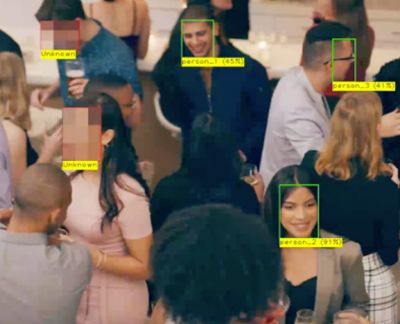Lumeo unveils flexible redaction analytic for privacy and compliance

By SSN Staff
Updated 4:19 PM CST, Thu December 1, 2022
OAKLAND—Lumeo, a designer of computer vision solutions, has announced a flexible analytic that conditionally blurs objects such as faces, license plates and more to ensure that surveillance systems adhere to privacy and conform to legal requirements.
According to Lumeo, maintaining personal privacy is a pressing concern for all entities employing a surveillance system. In the past decade more governments around the world are enacting new privacy laws which hold businesses accountable for how they collect, store, and access personal information.
 From the European Union's General Data Protection Regulations (GDPR) and the California Consumer Privacy Act (CCPA) to Canada's Personal Information Protection and Electronic Documents Act (PIPEDA) and Singapore’s Personal Data Protection Act, new privacy laws are emerging in all parts of the globe. Lumeo’s new dynamic video redaction solution helps companies protect individual privacy while protecting people and assets inside and outside of facility walls.
From the European Union's General Data Protection Regulations (GDPR) and the California Consumer Privacy Act (CCPA) to Canada's Personal Information Protection and Electronic Documents Act (PIPEDA) and Singapore’s Personal Data Protection Act, new privacy laws are emerging in all parts of the globe. Lumeo’s new dynamic video redaction solution helps companies protect individual privacy while protecting people and assets inside and outside of facility walls.
Traditional privacy masking is static, where the mask blocks defined areas in an image or live video feed. Typically, this is done directly on the camera and can be used, for example, to mask windows, sensitive areas, and other public areas. The problem with this approach, however, is that vital information may be lost behind the mask and is extremely limited.
Lumeo’s conditional redaction analytic provides customers complete control of when, how, and what to blur. This ensures that everything else in the video frame or image can be seen and monitored as usual. Identities are protected, while still allowing operators to observe and record events in the video footage. Its capabilities include:
- Support for live or recorded video
- Triggering with one or more AI models or Rules in the Lumeo library, or with custom code
- Multiple options to control the amount and type of redaction - blur, mask, etc.
Lumeo’s redaction capability is now a new analytic building block available in the Lumeo library. Given Lumeo’s Netflix-like model this means you do not pay extra or separately for it. Compared to other single-purpose redaction APIs in the market, Lumeo’s pricing model makes it more cost effective for customers to deploy, according to the company.
Lumeo’s redaction analytic can be deployed for several use cases including:
- Comply with GDPR Subject/Customer access requests for personal video footage by blurring an individual or everyone but a specific individual (de-identification)
- Collect Business intelligence statistics such as queue lengths, traffic and more without compromising customers’ privacy
- People attribute based redaction, such as Students vs Visitors or Employees vs Customers. When used with facial recognition to blur the faces of those individuals not stored in the database. Everything else in the video frame or image can be seen and monitored as usual, ensuring identities are protected
- Time-based redaction such as blurring faces during daytime and turning it off when monitoring a site at night for intruders.
- Blur registered license plates but unmask unknown vehicles in restricted areas
“Ensuring privacy is no longer a nice to have if you are using physical security solutions like video surveillance. Our customers must find the right balance between securing their organization and protecting individual privacy.” said Devarshi Shah, CEO and co-founder of Lumeo. “We see this analytic as the solution to complying with privacy laws, many of which come with large punitive consequences.”
Lumeo is the first and only ‘no-code’ video analytic builder that provides flexibility to create and deliver custom analytics, with no technical skills needed. Using web-based drag-and-drop tools, analytic building blocks, pre-made and custom AI models, and third-party integrations. This approach ensures that Lumeo customers can quickly define and deploy the conditional redaction analytic no matter the hardware (IP/analog camera, video recorder) or video management system in use.
“This flexible analytic will not only help customers keep people and property safe but will also help them to navigate the ever-changing privacy regulatory landscape,” Shah noted.
Comments